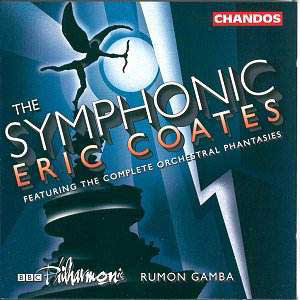 Composer: Andor Foldes
Composer: Andor Foldes
Works: Beethoven: Sonata Op. 12, Pathétique Sonata, Op. 78, Sonata Op. 79; Schumann: Abegg Variations, Papillons, Aufschwung (Fantasiestücke Op. 12/2); Brahms: Rhapsody in G minor Op. 79/2, Intermezzo in E flat Op. 117/1; Chopin: Waltz in A flat Op. 34/1, Polonaise in A Op. 40/1
Performers: Andor Foldes, piano
Recording: Tono Recordings, 1950-51
Label: APR
Andor Foldes, a notable figure in the pantheon of mid-20th century pianists, emerges in this collection of recordings from 1950-51 as an artist of considerable technical proficiency and intellectual rigor. Born in Budapest in 1913 and later establishing his career in America, Foldes became particularly associated with the music of Bartók, yet this compilation highlights his engagement with the core repertoire of the Western classical canon. The selection of works, ranging from Beethoven to Chopin, provides a broad canvas on which to evaluate his interpretive choices and performance style during what could be deemed his early maturity.
Foldes’s rendition of Beethoven’s Op. 12, Pathétique Sonata, showcases a commendable clarity of articulation, particularly in the right-hand runs which unfold with precision. However, the emotional depth that one expects from this iconic work appears somewhat elusive. The outer movements, while technically adept, lack the vivacity that could elevate them beyond mere execution. The Presto alla tedesca, for instance, is fluent but devoid of the wit that often characterizes this movement in more dynamic interpretations. In contrast, the slow movement, though appropriately scaled, suffers from a failure to engage the listener on an emotional level, presenting a rather aloof persona that permeates much of Foldes’s playing in this repertoire.
Transitioning to Schumann, the Abegg Variations reflect a similar analytical approach. The concluding filigree of the treble lines is executed with finesse, yet the overall dynamic range feels constrained, lacking the rich intimacy and fantasy that Schumann’s music demands. In Papillons, the rhythmic regularity in the opening is more metronomic than imaginative, especially when juxtaposed with the more expressive interpretations offered by pianists like Alfred Cortot, whose performances evoke a haunting spontaneity that is notably absent here. Foldes’s cosmopolitan style, while technically commendable, often comes across as brusque, creating a stark contrast to the inherent lyricism of Schumann’s writing.
The Brahms selections further illustrate the cool detachment that characterizes Foldes’s interpretations. The Intermezzo is marked by a troubling facelessness, where the nuances of Brahms’s rich harmonic language seem overlooked. The Rhapsody, while displaying an analytical clarity, risks mechanical execution, rendering the contrasting sections uninvolving. A persistent lack of legato further diminishes the warmth expected in Brahms’s music. This tendency towards a clinical approach continues into his Chopin interpretations, where the A flat Waltz feels unrelieved in its mezzo forte, lacking the dynamic contrasts that are essential to convey the emotional landscape of Chopin’s works.
The sound quality of this release is worth noting, as the recordings have been preserved with a judicious ear for balance. APR’s decision to retain some surface noise while ensuring the integrity of the recordings is commendable, providing a sense of authenticity to these historical documents. The fidelity captures the essence of Foldes’s playing, though one might wish for a greater warmth in the piano sound—an aspect that may have benefited from more modern engineering techniques.
Foldes’s approach, while certainly appealing to collectors interested in mid-century performance practices, ultimately presents a paradox. His analytical clarity and technical prowess are undeniable, yet they often come at the expense of emotional engagement and interpretive depth. This collection, while shedding light on previously unavailable recordings, invites scrutiny of Foldes’s artistry. His performances offer a unique perspective on these masterpieces, yet they may leave some listeners yearning for the passionate expressiveness that characterizes the most compelling interpretations of this repertoire.



